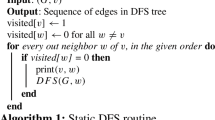Abstract.
As trees are used in a wide variety of application areas, the comparison of trees arises in many guises. Here we consider two generalizations of classical tree pattern matching, which consists of determining if one tree is isomorphic to a subgraph of another. For the embedding problems of subgraph isomorphism and topological embedding, we present algorithms for determining a largest tree embeddable in two trees T and T' (or a largest subtree) and a smallest tree in which each of T and T' can be embedded (or a smallest supertree). Both subtrees and supertrees can be used in a variety of different applications. For example, when each of the two trees contains partial information about a data set, such as the evolution of a set of species, the subtree or supertree corresponds to a structuring of the data in a manner consistent with both original trees. The size of a subtree or supertree of two trees can also be used to measure the similarity between two arrangements of data, whether images, documents, or RNA secondary structures.
In this paper we present a general paradigm for sequential and parallel subtree and supertree algorithms for subgraph isomorphism and topological embedding. Our sequential algorithms run in time O(n 2.5 log n) and our parallel algorithms in time O(log 3 n) on a randomized crew pram using a polynomial number of processors. In addition, we produce better algorithms for these problems when the underlying trees are ordered, that is, when the children of each node have a left-to-right ordering associated with them. In particular, we obtain O(n 2 ) -time sequential algorithms and O(log 3 n) -time deterministic parallel algorithms on crew prams for both embeddings.
Similar content being viewed by others
Author information
Authors and Affiliations
Additional information
Received July 17, 1995; revised May 25, 1996, and December 10, 1996.
Rights and permissions
About this article
Cite this article
Gupta, A., Nishimura, N. Finding Largest Subtrees and Smallest Supertrees . Algorithmica 21, 183–210 (1998). https://doi.org/10.1007/PL00009212
Issue Date:
DOI: https://doi.org/10.1007/PL00009212




